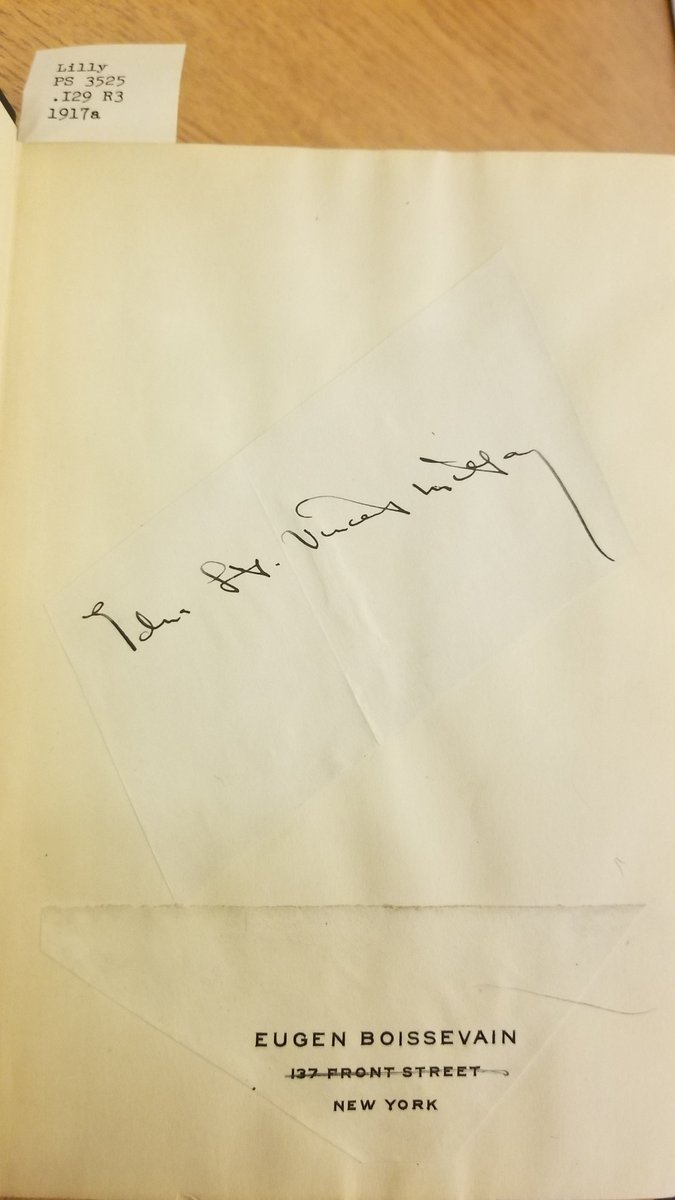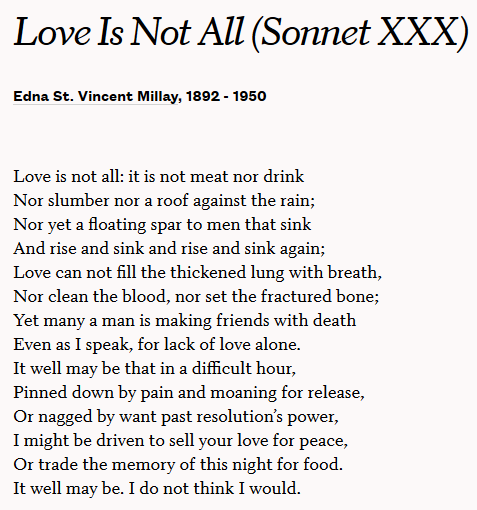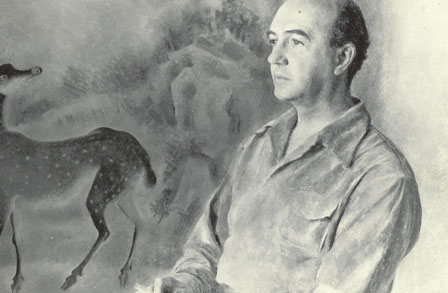






Millay responded that she preferred Ella to come to her bed
Did you think Lovey had forgotten her own precious poppy laden canoe? Not so! [...] it is awfully lonely without you. No one to play with me, no one to call me ‘grapefruit,’ no one to roll on at night.




And dear readers, we leave you with sonnet XXX

“she smoked cigarettes in the cemetery, she drank spirits, she cut classes when she pleased, she played hooky from compulsory chapel, she led classmates in insurrections...



"Never ask a girl poet to marry you."
The family’s motto, is perfect, as we shall see: "Ni regret du passé, ni peur de l'avenir" (Neither regret for the past, nor fear of the future)

"Marriage, if not abused is one of the most civilized institutions... but swimming is one of the most wonderful sports, and yet
Millay and Boissevain, over the course of nearly three decades, were perfectly equated with each other and each of their lovers. It may not have been #polyamory as we understand it today, but it was love.











































